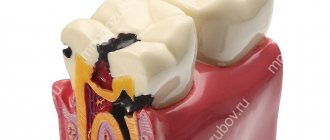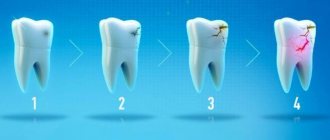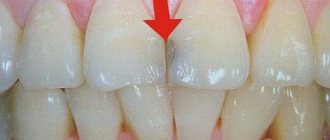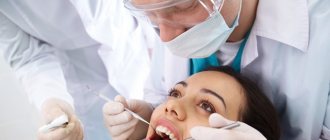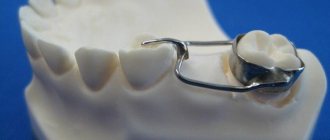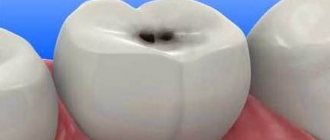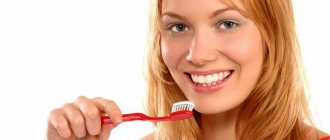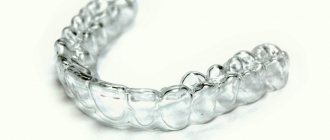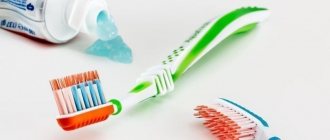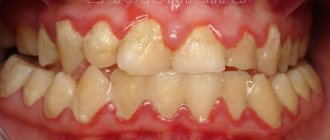Description
Toothpaste Maximum protection against caries is produced by the Colgate-Palmolive brand in China.
On a note!
The manufacturer positions its product as the first and only product, the unique formula of which successfully neutralizes sugar acids, dissolves and removes plaque, strengthens and restores tooth enamel, and freshens breath.
The paste is suitable for all family members, with the exception of children under 6 years of age.
Ingredients: water, sorbitol, calcium carbonate, silicon dioxide, sodium fluoride, sodium lauryl sulfate, magnesium carbonate, saccharin, limonene, color.
Colgate toothpaste Maximum protection against caries is available in plastic tubes of 50, 75 and 100 ml. Shelf life – 36 months.
Advantages and disadvantages
Advantages:
- effective protection against caries;
- strengthening enamel;
- neutralization of sugar acids;
- whitening effect;
- pleasant mint taste that freshens breath for a long time;
- The optimum ratio of price and quality.
Flaws:
- presence of chemicals in the composition;
- limited choice of flavor palette;
- there are contraindications.
Overview of the line Maximum protection against caries
Colgate series Maximum protection against caries is represented by three toothpastes:
- Colgate Sugar Acid Neutralizer - designed for high-quality oral care. It fights enamel microdamage in two ways: it contains a unique formula that neutralizes acids, the main cause of caries, and fluoride and calcium strengthen and protect teeth from destruction. The effectiveness and safety of the composition have been clinically confirmed.
- Colgate Double Mint – the paste base contains liquid calcium and fluoride, mint extract. The product penetrates even into hard-to-reach areas of the oral cavity, improving the condition of weak enamel and protecting it from further destruction. The pleasant mint taste leaves you feeling fresh for a long time after cleaning.
- Colgate Fresh Mint - the paste formula strengthens tooth enamel, preventing the development of caries. Has a slight whitening effect. Fights pathogenic microbes in the oral cavity - the main cause of unpleasant odor. Freshens breath for a long time.
How is fluoridation carried out: a step-by-step description of the process
Applying strengthening compounds to the enamel is not particularly difficult for a specialist, however, to achieve the desired effect, it is necessary to strictly follow the technique. We invite you to familiarize yourself with the general plan of the procedure:
- First, the dentist must carefully remove plaque and tartar, for which special hand instruments are usually used. For older children, ultrasonic cleaning is allowed - more aggressive, but at the same time more effective,
- after this, the surface of the teeth is thoroughly dried using warm air under pressure - this will help ensure tighter contact between the enamel and the strengthening composition,
- the tooth is coated with a sealing fluid containing fluoride ions and then dried again,
- Next, the doctor soaks the swab in a solution of copper and calcium hydroxide and uses it to treat the tooth surface on all sides. At this stage, calcium fluoride crystals are formed in the dentinal tubules, which provide effective strengthening of dental tissues.
The photo shows the procedure for fluoridation of teeth.
The entire process is absolutely painless, and therefore does not require the use of any anesthesia methods. Fluoridation is absolutely harmless, of course, if there are no contraindications to its use.
Contraindications and side effects
Contraindications:
- individual intolerance to individual components of the paste;
- taking fluoride-containing medications and supplements;
- fluorosis;
- children under 6 years old.
Side effects when using toothpaste Maximum protection against caries is associated with excess intake of sodium fluoride into the body. More often, the problem occurs in children who intentionally or involuntarily swallow the drug due to the formation of the pharyngeal reflex.
Important!
Excess fluoride in the body leads to conditions such as fluorosis, bone destruction, digestive tract disorders, disruption of the endocrine system, pathology of the heart and blood vessels. You can avoid these consequences if you follow the recommendations for brushing your teeth.;
How to protect children's teeth?
Good afternoon. My name is Kirill Vladimirovich, I am a dentist. Almost all of our patients know how to brush their teeth, how to choose a toothbrush and toothpaste. Well, like everyone else, adults. It's more difficult with children.
Not every child knows what a sweet bagel and a blackened tooth have in common. And almost no one is ready to give up this bagel completely for the sake of healthy teeth. Meanwhile, a child’s tooth damaged by caries is destroyed much faster. This is due to the low mineralization of the dental tissues of primary teeth and the special, significantly larger diameter of the dentinal tubules - the internal space of the tubes that make up the dental tissue. Simply put, a baby tooth is less resistant to decay. Another feature of baby teeth is that they hurt less often and less frequently, which is why children complain less about toothache and can endure tooth decay relatively easily.
In addition, many parents do not take their children's teeth seriously. It is believed that baby teeth will fall out anyway, so bother with a visit to the dentist when you are already full of troubles with children’s colds and preparing for school. Yes, and the children of the dentist are afraid, to be honest. By the time you persuade the baby to open his mouth, it’s already uncomfortable in front of the doctor.
But baby teeth are of great importance. First of all, they save space for a permanent tooth. It is a known fact that with the early removal of a baby tooth, sometimes the rudiment of a permanent tooth is damaged, and even with a successful removal, the vacated space of the removed baby tooth is gradually reduced due to the remaining teeth moving into this place, and the permanent one, when it decides to be born, has problems with lack of places in the dentition. Simply put, the permanent tooth does not fit. This doesn’t always happen, of course, but if it does, the tooth sticks out unsightly to the side and calls the orthodontist. And all because the small hole was not treated in time.
You should learn to brush your teeth from a very early age. A mother can start brushing her baby’s teeth as early as one year – one year and three months. Of course, this needs to be done with a special small brush. No paste is used. This should be done when the baby is in a good mood and not sleepy. The practical effect of these procedures, of course, is small, if only because babies can snack almost every hour, so their teeth will not remain clean for long. But at the same time, the baby gets used to the fact that regularly brushing his teeth is in the order of things, which means that at the first opportunity he will master this skill on his own.
There is one great way to protect children's teeth from caries. This method is called fissure sealing. The trouble is that half of the holes start from the upper, chewing surface of the teeth. So, if you put a filling on this surface before problems start, then the hole will not be able to grow from here. This pleasure costs a little, but its main advantage is that you don’t need to drill the tooth, which means you don’t need to give an injection. The problem is solved, the two most unpleasant things are removed from the equation, and children begin to love dentists. Especially advanced dentists use multi-colored fillings (for girls - fillings with sparkles, hurray!) and give a balloon after the procedure. Profit, a visit to the dentist becomes enjoyable 
Many parents doubt at what age they should take their child to the doctor. My opinion on this matter is clear - as soon as doubts arose. The first visit for the purpose of examination, even if everything is fine and even the pediatrician does not notice any problems during the examination, should take place no later than 5 years. The fact is that at the age of 5 the first permanent tooth may appear - the first molar, or in common parlance the six. The importance of this tooth in the human dental system can hardly be overestimated. This is the main chewing tooth, and in addition, it determines the child’s future bite. In general, the appearance of this general cannot be missed.
Sometimes the child needs an x-ray to evaluate the situation. Contrary to popular belief, this procedure is not harmful. Modern dental x-ray machines have an extremely low dose of radiation, and modern sensors and film for images are highly sensitive and can further reduce the load. It is believed that one dental photograph is one four thousandth of the maximum annual load. It's OK.
How can parents properly prepare their child for a visit to the dentist? My opinion is to never scare a child with dentists. Arrange a visit with your child in advance. Go to the clinic just to meet the doctor. If necessary, make compromises (after treatment - a park and ice cream, for example) and be sure to fulfill what was promised. And, of course, do not be afraid of the doctor.
Be healthy!
Reviews
I liked Colgate paste for caries Neutralizer of sugar acids, but I would not recommend it for regular use. It contains SLS, the taste is harsh and dries out the lips and tongue. But the cleansing effect is great, and I don’t rule out strengthening the enamel. I recommend alternating this product with softer formulations.
Alina, Moscow
I used Colgate maximum protection against caries Double Mint for a month. I really wanted to strengthen my teeth. The product cleans well and has a long-lasting, refreshing mint taste, like all products from this manufacturer. I didn't notice any serious disadvantages. Just good pasta. I will buy more.
Valentina, Tula
Causes
Although enamel hypoplasia is more common in permanent teeth, it is also observed in children. The main factors that increase the risk of its occurrence include malocclusion, periodontal disease and the formation of irregularly shaped teeth. In addition, hypoplasia of primary teeth can be the result of:
- diseases of the gastrointestinal tract, as a result of which the absorption of vitamins and microelements is reduced,
- long-term diet low in vitamins A, D and K, as well as calcium, magnesium, fluorine and phosphorus,
- endocrine disorders (thyroid gland, pancreas, thymus),
- childhood diseases (smallpox, measles, rubella).
Some researchers have found that dental hypoplasia in children may be caused by prenatal abnormalities such as lead exposure or maternal tetracycline use.
Congenital enamel anomaly is a hereditary disorder of enamel development, leading to damage to both primary and permanent dentition. It may coexist with eruption pathology, congenital tooth loss, anterior open bite, pulp calcification, dentin dysplasia, crown and root resorption, root hypercementosis, root structural defects, and taurodontism. The defect is not associated with any systemic symptoms or defects in other organs and can be divided into subtypes:
- In the hypoplastic type, the enamel matrix is formed in smaller quantities, but is relatively well mineralized.
- In type 1 hypomineralization (hypocalcification), it is present in relatively normal amounts, but is not sufficiently mineralized.
- With the hypomaturation type, the last phases of the mineralization process are disrupted; this type is considered a milder form of the hypomineralizing type.
Each type of problem can be divided into different subtypes depending on the mechanism of inheritance, as well as clinical, radiological, histological and genetic characteristics. In all major types, both maturational and mineralization disorders are present to varying degrees. An anterior open bite can be observed in both the hypoplastic and hypomineralizing types. This variability in clinical manifestations makes differential diagnosis difficult.
Analogs
The Colgate Maximum Protection Against Caries line has many analogues with similar characteristics from other manufacturers:
- Splat Artikum Protection against caries and preservation of fresh breath - a high-tech refreshing therapeutic and prophylactic toothpaste. The composition includes a complex of natural components: ratania and stevia extracts, neroli essential oil in combination with hydroxyapatite, organic amino fluoride and zinc. The product safely strengthens and whitens enamel, protects gums from inflammation and destroys bacteria, and freshens breath for a long time. Cost 190 rubles.
- President Unique is a toothpaste with a high concentration of xylitol, papain and calcium. Xylitol neutralizes acids in the mouth. Papain helps dissolve plaque. Calcium has a remineralizing effect, strengthens and protects enamel from destruction. Cost 220 rubles.
Personal hygiene
Every child and adult should know the basic rules of personal hygiene.
- Brush your teeth in the morning after sleep and before bed. Experts advise brushing your teeth after every meal to provide additional protection against plaque and tooth decay. But 2 times will be enough.
- Go to the dentist for a check-up every year. Ideally, you should go to the dentist once every six months, but if you have never had serious dental problems before, then one visit a year will be enough.
- Choose the right toothbrush hardness, taking into account the condition of your teeth and gums.
- Cheeks, gums and tongue need additional care.
- After each meal you need to remove leftover food. A mouthwash is suitable for this. You can also buy dental floss, or in a pinch, toothpicks will do. You can also chew gum for 5-7 minutes. Experts strongly advise against using chewing gum for more than 15 minutes, as this will only have a negative effect on the condition of your teeth.
- Maintain a proper diet. You need to eat less acidic foods and foods that stick to your teeth.
